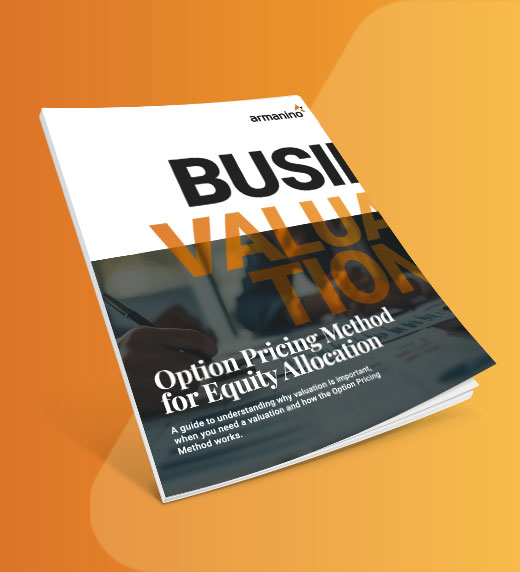
Updated February 02, 2022
The right acquisition can complement an organization’s organic growth by broadening its existing customer and contract base and providing access to new distribution channels and product offerings. Finding an available target can be challenging, but the work doesn’t end there. Even seemingly straightforward transactions can have complex accounting considerations.
Here, we discuss some of the key steps in the acquisition process to ensure the accounting for the transaction is in accordance with U.S. generally accepted accounting principles.
A quality of earnings (QoE) report is often completed as part of the financial due diligence process to analyze the target company’s financial information beyond what you would find in an audit report by providing information about the company’s value now and in the future.
Buyers and underwriters typically request a QoE report before the deal closes, but it is also useful for the accounting team recording the transaction because it helps identify the assets and liabilities to be acquired as well as potential purchase price adjustments.
The purchase agreement should outline the details of the acquisition. Although purchase agreements can run the gamut from a fill-in-the-blank form to an extensive document with multiple exhibits and attachments, a well-written purchase agreement should identify the following:
Typically, the purchase agreement will outline the assets and liabilities that are part of the transaction. No matter how thoroughly the purchase agreement describes assets and liabilities, properly accounting for the acquisition may require additional valuation work since assets and liabilities are required to be recorded at fair value on the date of acquisition, which often does not equal book value. Some companies may perform the valuation themselves, but most companies use a third-party valuation specialist. It is helpful to reference an independent valuation to identify the fair value of assets acquired and liabilities assumed. An independent valuation can also determine any intangible assets acquired as part of the acquisition, such as customer relationships, developed technology, or trademarks. These details help clarify the accounting entries needed.
Purchase price accounting involves recording the fair value of the assets acquired and the liabilities assumed, which requires significant estimates, documentation and judgment. Engaging a valuation specialist early in the process is key.
Let’s take a look at some of the common adjustments requiring expertise.
Intangible assets — such as patents, trademarks, customer lists and noncompete agreements — may be critical to a company’s value at acquisition. Determining their fair value usually involves sophisticated estimation techniques because quoted prices are rarely available.
In an acquisition, deferred revenue is adjusted from its recorded amount to its fair value based on the cost to deliver the related product or service for which cash has already been collected. This can result in a portion of revenue that never gets recorded on the post-transaction books. For companies that receive significant prepayments, this can result in a material decrease to deferred revenue, and similarly, to post-acquisition revenue.
Likewise, prior to an acquisition, the acquiree may have recognized a deferred commission expense asset for the cost of obtaining customer contracts. The acquirer cannot recognize an asset for those costs in its post-transaction books, so the values of any deferred commission assets need to be eliminated in purchase accounting.
Many acquisitions include an earn-out, which allows the buyer to pay part of the purchase price only if certain goals are met. The earn-out agreement may be simple or elaborate, and the wide variety of potential structures complicates valuations. A simple earn-out may be measured through a straightforward discounted cash flow analysis, but more complex earn-out structures may require more sophisticated valuation methods, such as a scenario-based method or an option pricing method.
Leases acquired in a business acquisition or business combination can impact purchase accounting in several ways.
Deferred rent appears on a seller’s books when a lessee is given free rent in one or more periods, or rent escalates throughout the lease term. A lessee must recognize scheduled rent increases on a straight-line basis over the lease term, resulting in a difference between actual rent payments and the amount recognized on the financial statements.
The buyer cannot recognize the target’s deferred rent balance because it does not meet the definition of an asset or liability. The buyer captures the impact of any previously recognized asset or liability for deferred rent in the fair value measurement of an intangible asset or liability for favorable or unfavorable terms.
For example, say the buyer assumes an office lease which includes escalating payment terms and a free rent period that ended before the acquisition. Those escalating payment terms can mean that the monthly rent post-acquisition will be above market, so the buyer has an unfavorable lease liability for that lease. That unfavorable lease liability will need to be amortized to lease expense on a straight-line basis over the remaining lease term.
Under ASC 842, all operating leases must be recognized on the balance sheet with a lease liability and a right-of-use (ROU) asset. When recording an ROU asset in a business combination, the lease liability must be measured as if it were a new lease and the ROU asset must be measured at the same amount as the lease liability, adjusted to reflect favorable or unfavorable terms of the lease as compared to market terms.
The lease liability and the ROU asset should be measured as if it were a new lease, with the ROU adjusted to allocate the cost of the acquisition to the buyer.
The methods businesses use to calculate accounts receivable reserves can vary widely. The buyer must record accounts receivable at fair value, which results in netting the allowance for bad debts with the gross value of receivables. However, it’s important to understand the seller’s historical method for calculating the reserve. Given the short timeframe over which receivables are usually outstanding, there’s usually no need to discount this valuation unless the acquiree has receivables with long collection terms.
PP&E that is acquired in a business combination should be measured at fair value. Accumulated depreciation from the acquiree’s books is not carried forward into the buyer’s financial statements.
If the buyer intends to sell acquired PP&E shortly after the acquisition, the assets may qualify for held-for-sale classification and measured at fair value less the cost to sell.
Inventory acquired in a business combination must be measured at its acquisition-date fair value, which is the price at which market participants would be willing to buy or sell the inventory.
The fair value of inventory consists of raw materials plus the direct and indirect expenses required to bring the inventory from its current state to completion, plus a reasonable profit margin.
Many acquisitions feature rollover equity, in which certain equity holders in the target company roll a portion of their ownership over into the acquirer company instead of cash. The parties can structure rollover transactions in many ways, and the value assigned to rollover equity in the purchase agreement rarely considers all of the rights, preferences and limitations that impact fair value. Due to the complexity of deal structures, a valuation specialist can be a tremendous asset in evaluating the transaction’s economics.
If you have questions about merger and acquisition transactions, contact our experts.


